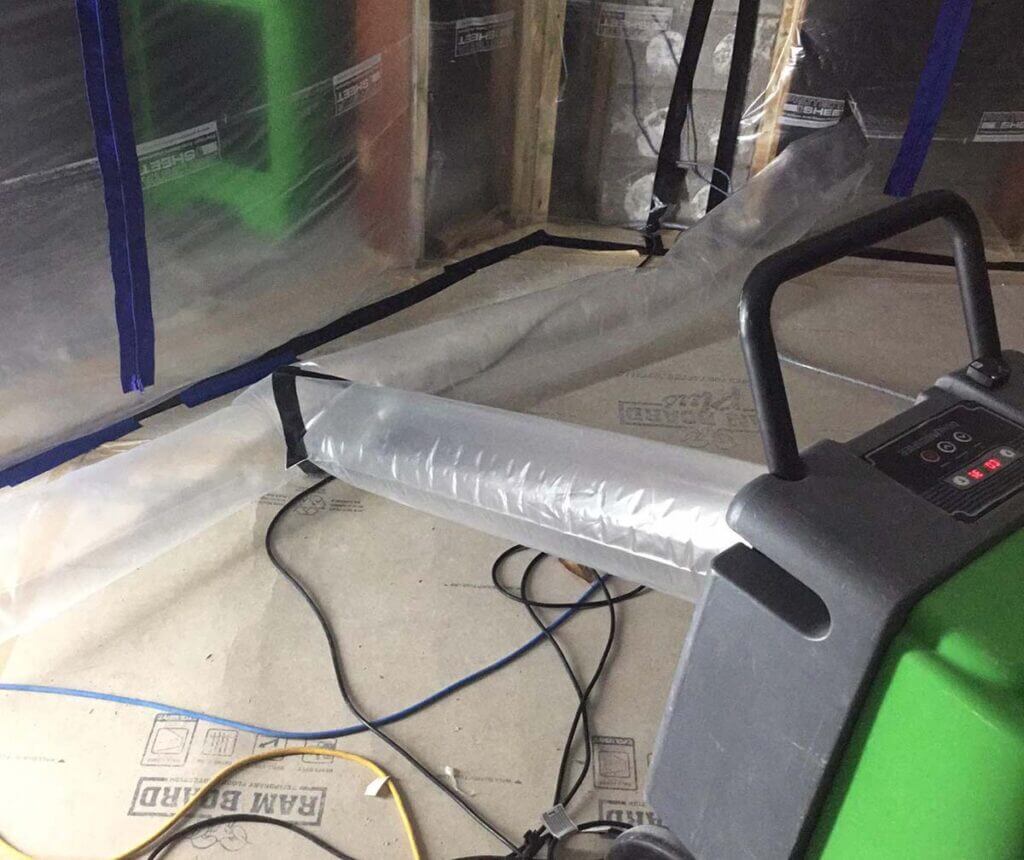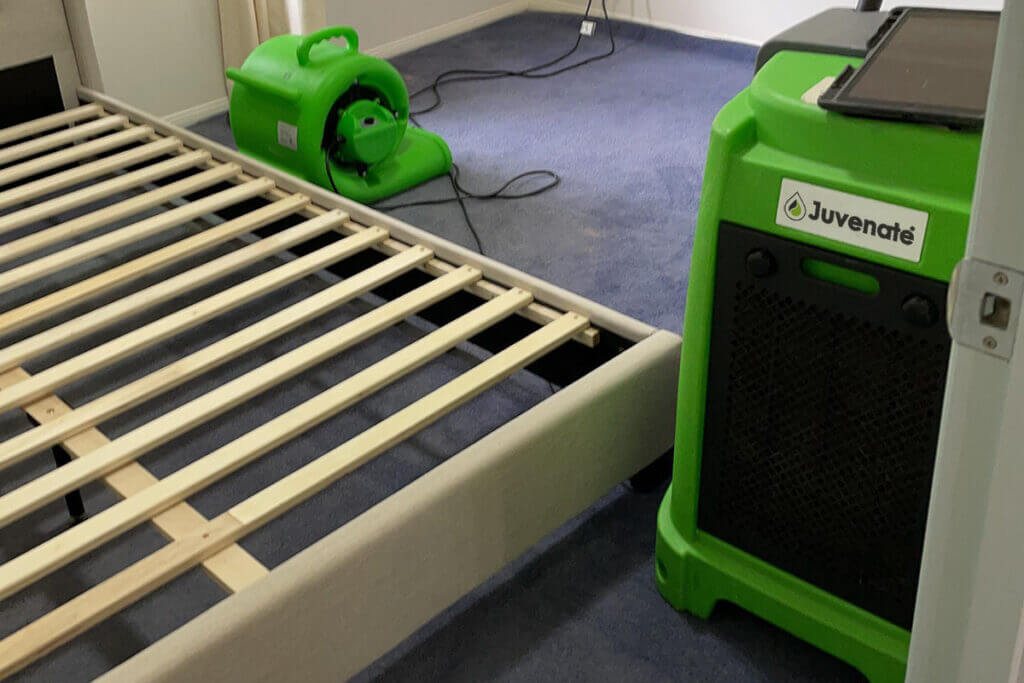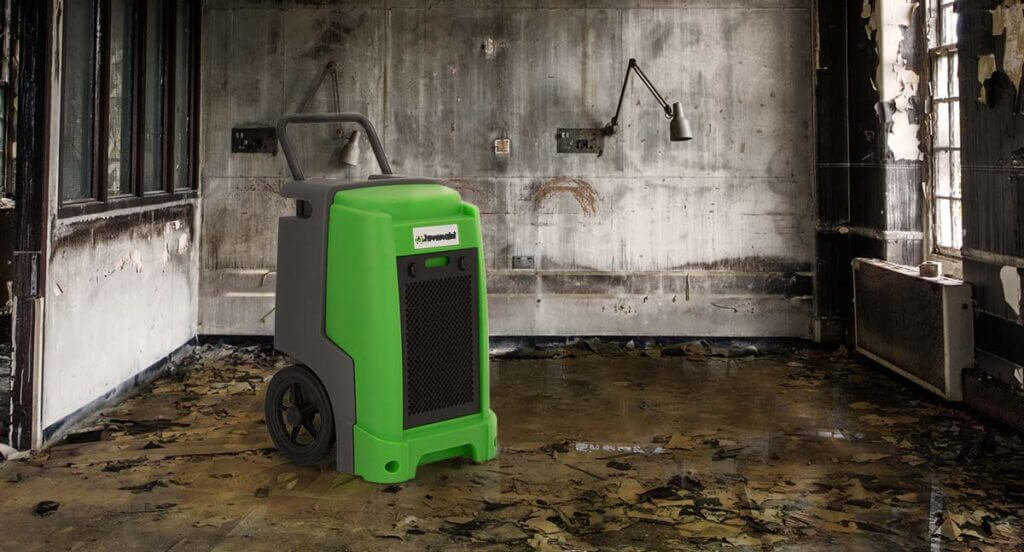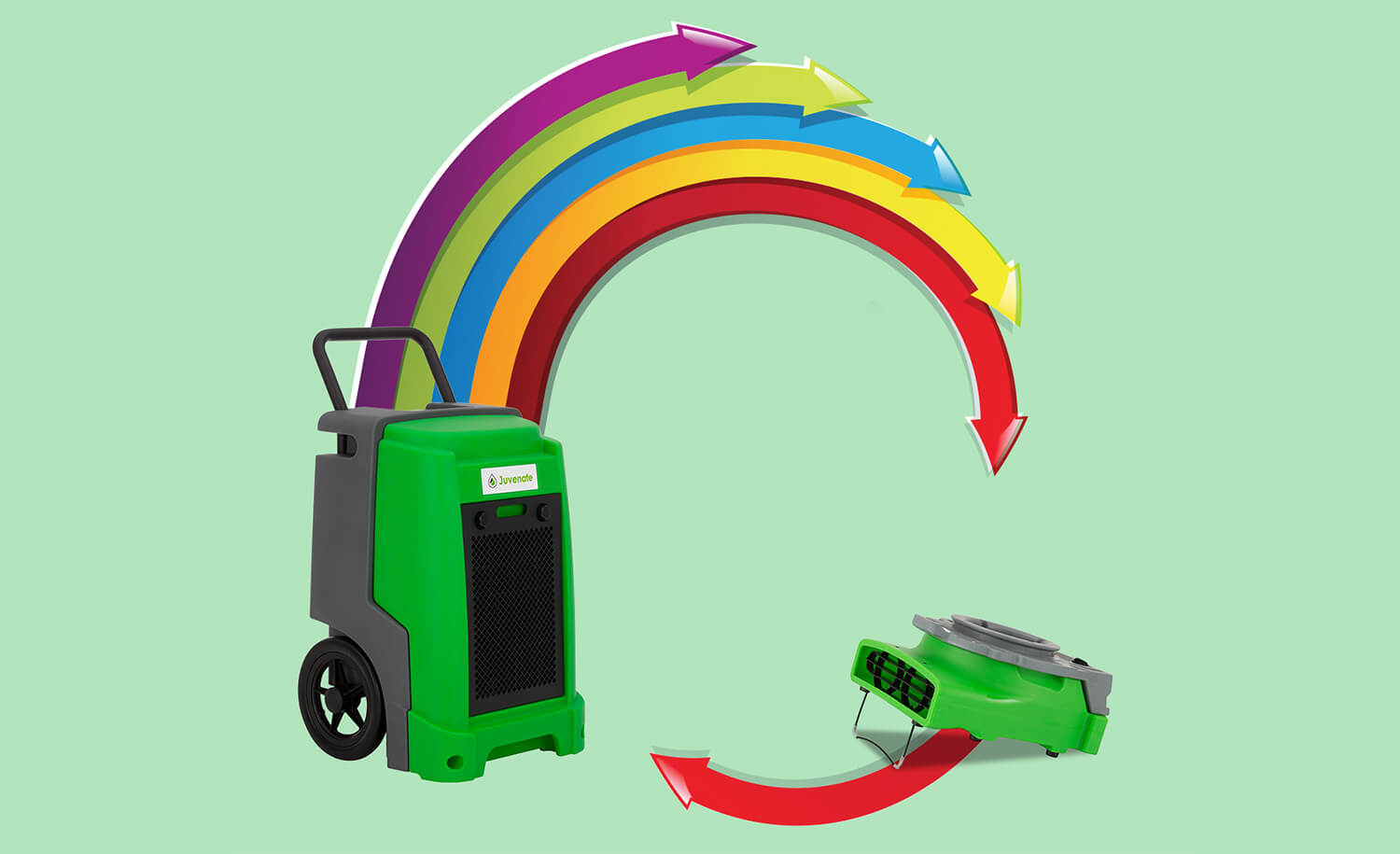A closed drying system is achieved by creating a drying chamber which is not open to the outside environment. This can be achieved by simply closing the window and entry door to a room. Large open areas that are only partially affected can have containment put in place. This is done to target affected areas that requires to be dried.
Air Movers
As the name implies, Air Movers create air flow which increases the rate of evaporation. They should be placed at a 45 degree angle to the wall and also in the same direction. This is done to create a circular rotation of the air mass in the area. Also ensure that no loose items can be dislodged and become stuck on the inlet grills of the air movers, restricting air flow into the air mover. Some items that could cause this condition are loose paper, curtains etc. Remember to tape down power cords where a trip hazard may occur (use painters tape on timber floors)

Dehumidifiers
As stated air movers create air flow which increases the rate of evaporation. However if we do not remove water vapour from the air mass, then very quickly the air mass will become saturated (100% RH). Water vapour in the air mass begins to condense into liquid on surfaces. Once dew point is reached inside the drying chamber creating the potential for secondary damage to occur.
This is why dehumidifiers are very important in the restoration process. Dehumidifiers remove water vapour from the air by reducing the temperature of the air mass passing through the evaporator coils.
Dew Point
At dew point water vapour condenses into a liquid. The liquid is collected and pumped out through a hose to the nearest sink, toilet or drain. Afterward, the air exits the evaporator and passes through the condenser, where it absorbs heat. Becauce of this added energy, two processes to occur. Firstly warm dry air can absorb much more moisture than cold dry air. Secondly, heat in the air allows surrounding materials to absorb heat energy from the air. This in turn increases the temperature of the medium being dried, meaning that more heat energy is available to evaporate liquid water.
The dehum should be placed in the middle of an area, with the outlet travelling in the same direction as the air movers. Although be careful not to allow the air flow coming out of the dehumidifier to impact directly onto doors as it could cause them to buckle. Try the keep the room temperature in the 26 to 32 degree range. In doing so will allow the dehumidifiers to work at their peak efficiency. Again tape down power cords and drain hoses where a trip hazard may occur (use painters tape on timber floors)

Balanced Drying System
A balanced drying system is when you have sufficient dehumidification in place to remove the moisture (vapour) from the air that the air movers are evaporating. In other words a whole house event with 12 air movers and 1 dehumidifier is not a balanced drying system.
If you are in the situation that you have limited power available I would prefer that you reduce the number of air movers instead of dehumidifiers (1 air mover in a room instead of two for example)
For more information on water restoration click here

We use Juvenate equipment! Shop here
